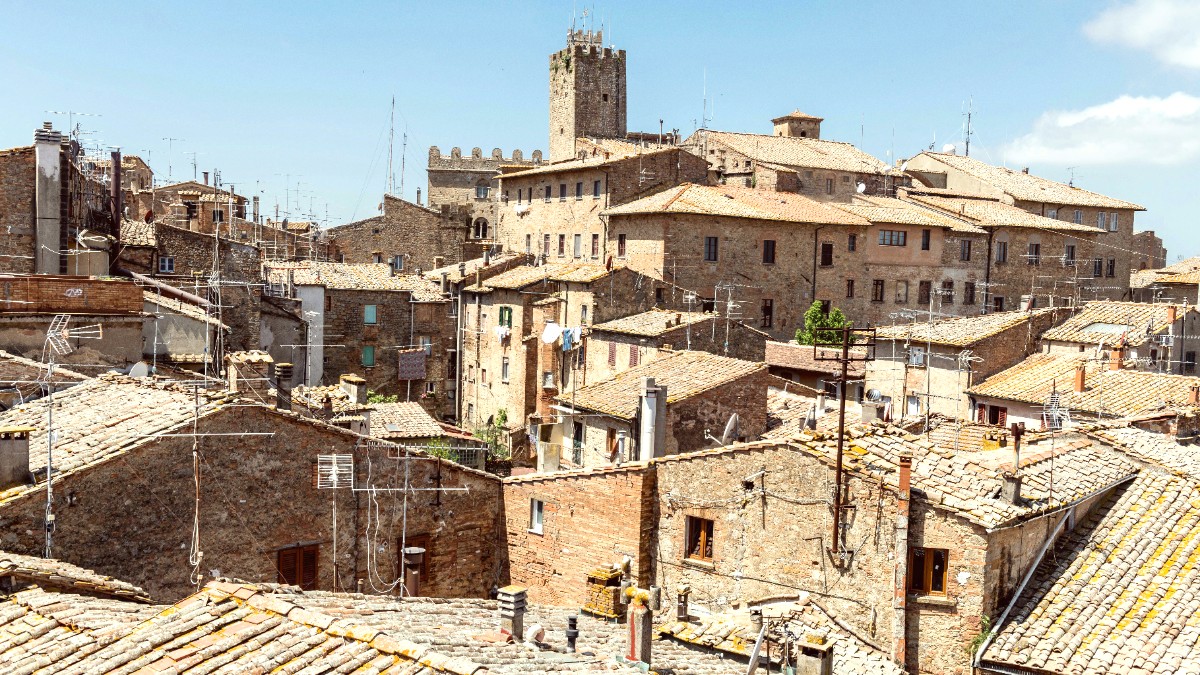
Tuscany, Italy
This guide details planning a memorable visit to Volterra. It outlines getting ready for your trip, moving around the region, finding lodging, and discovering local flavors. You will uncover hidden gems and gain insight into local life, creating a rewarding journey.
Volterra sits watching over the Tuscan countryside, a city carved from stone and time. You immediately feel the weight of centuries upon arrival. Cobblestone streets, worn smooth by countless footsteps, guide you past medieval towers, Roman ruins, and Etruscan gates. The air here carries the scent of olive groves and cypress trees, blending with the aroma of traditional Tuscan cooking. Volterra is not a quick stop on a whirlwind tour. It calls for your attention, rewards your curiosity, and offers a profound connection to Italy's layered past.
This city sits high, presenting sweeping vistas that extend to the horizon. From its panoramic viewpoints, you see vineyards stretching across valleys, distant villages perched on hills, and the subtle variations of light on the landscape. The quiet pace of life here invites contemplation, making it an ideal destination for those seeking both cultural depth and peaceful escape. Here, you genuinely disconnect and immerse yourself in the beauty of a bygone era.
Volterra stands squarely in the heart of Tuscany, strategically perched on a tall hill between the Cecina and Era valleys. This elevated position, about 530 meters (1,740 feet) above sea level, historically formed a defense and continues to yield unparalleled views. The city belongs to the province of Pisa, approximately 60 kilometers southeast of Pisa itself, and about 80 kilometers southwest of Florence, the regional capital. Its inland location places it within easy reach of both the famous art cities and the less-traveled coastal areas of Tuscany.
The landscape around Volterra is classic Tuscan. Gently rolling hills, covered with vineyards, olive groves, and dense forests, characterize the region. Cypress trees punctuate the skyline, creating iconic silhouettes. The fertile valleys below sustain agriculture, adding to the region's culinary richness. To the west, the land slopes towards the Tyrrhenian Sea, with the Etruscan Coast accessible within an hour's drive. This geographical setting holds both isolation, preserving Volterra's ancient character, and connectivity, making it a good base for exploring wider Tuscany. The geological formation of the hills also defines Volterra, specifically the dramatic "Balze" (bluffs) formed by erosion, which historically posed a threat to the city's western edge.
Approx. 530 meters (1,740 feet) above sea level.
Pisa Province.
Approx. 60 kilometers (37 miles) southeast.
Approx. 80 kilometers (50 miles) southwest.
Cecina and Era valleys, Tyrrhenian Sea (Etruscan Coast).
Volterra's history spans over three millennia, making it one of Italy's oldest continuously inhabited settlements. Its origins trace to the Villanovans, who settled the area around the 8th century BC. The Etruscans then shaped it into Velathri, one of the twelve powerful city-states of the Etruscan Dodecapolis. This period saw the construction of impressive defensive walls, parts of which stand today. Velathri grew into a wealthy center, recognized for its alabaster craftsmanship and trade routes. Etruscan influence defines Volterra, visible in its museum collections and the enduring Porta all'Arco.
The Romans conquered Velathri in the 3rd century BC, renaming it Volaterrae. Under Roman rule, the city continued to prosper, expanding with a forum, public baths, and a significant Roman theatre, still visible today. After the fall of the Roman Empire, Volterra saw periods of Lombard and Frankish rule before becoming an independent medieval commune. This era saw the construction of its striking Palazzo dei Priori and Duomo, shaping the medieval urban fabric seen today.
During the Renaissance, Volterra became a part of the power struggles between Florence and Siena. The Medici family of Florence eventually incorporated Volterra into their expanding dominion in the 15th century, building the formidable Medici Fortress to secure their control. This marked the close of Volterra's independent glory, but preserved much of its medieval character, as less new construction happened. Its long, layered history means every corner of Volterra is a story, inviting exploration and discovery. The city is a living museum, where ancient walls meet medieval palaces and Renaissance art.
Pictured: The Porta all'Arco, a preserved Etruscan gateway, stands as a testament to Volterra's ancient past.
Volterra holds the charm of a smaller Tuscan town, less crowded than some of its more famous neighbors, yet it presents a rich array of attractions and experiences. The city's identity remains intertwined with its Etruscan roots and, uniquely, with the art of alabaster carving. This ancient craft has seen practice here for thousands of years, passed down through generations of artisans. You can visit numerous workshops (botteghe) to observe carvers at work, transforming raw stone into delicate sculptures and decorative items. This offers a direct connection to a living tradition.
The city's main attractions include the remarkable Etruscan Guarnacci Museum, home to thousands of artifacts, including the famous "Ombra della Sera" (Shadow of the Evening). The well-preserved Roman Theatre provides a dramatic backdrop for summer events. The Piazza dei Priori, with its imposing Palazzo dei Priori, serves as the civic and social pulse of the town. The Duomo, with its mix of Romanesque and Renaissance elements, delivers a quiet space for contemplation.
Volterra cuisine features simple, fresh, and locally sourced ingredients, with emphasis on hearty meat dishes like wild boar ragù, local pecorino cheese, and seasonal produce like truffles and mushrooms.
The pace of life in Volterra moves slower, more relaxed, reflecting the "dolce vita" lifestyle. Mornings begin with a cappuccino and pastry, followed by leisurely exploration.
Volterra welcomes travelers seeking cultural immersion, history enthusiasts, and those desiring a tranquil escape into the heart of Tuscany. It suits independent explorers.
The city is walkable, though its hills and cobblestones ask for comfortable footwear. Its proximity to other Tuscan gems like San Gimignano and Siena also makes it an excellent base for day trips, presenting a balanced itinerary of exploration and relaxation.